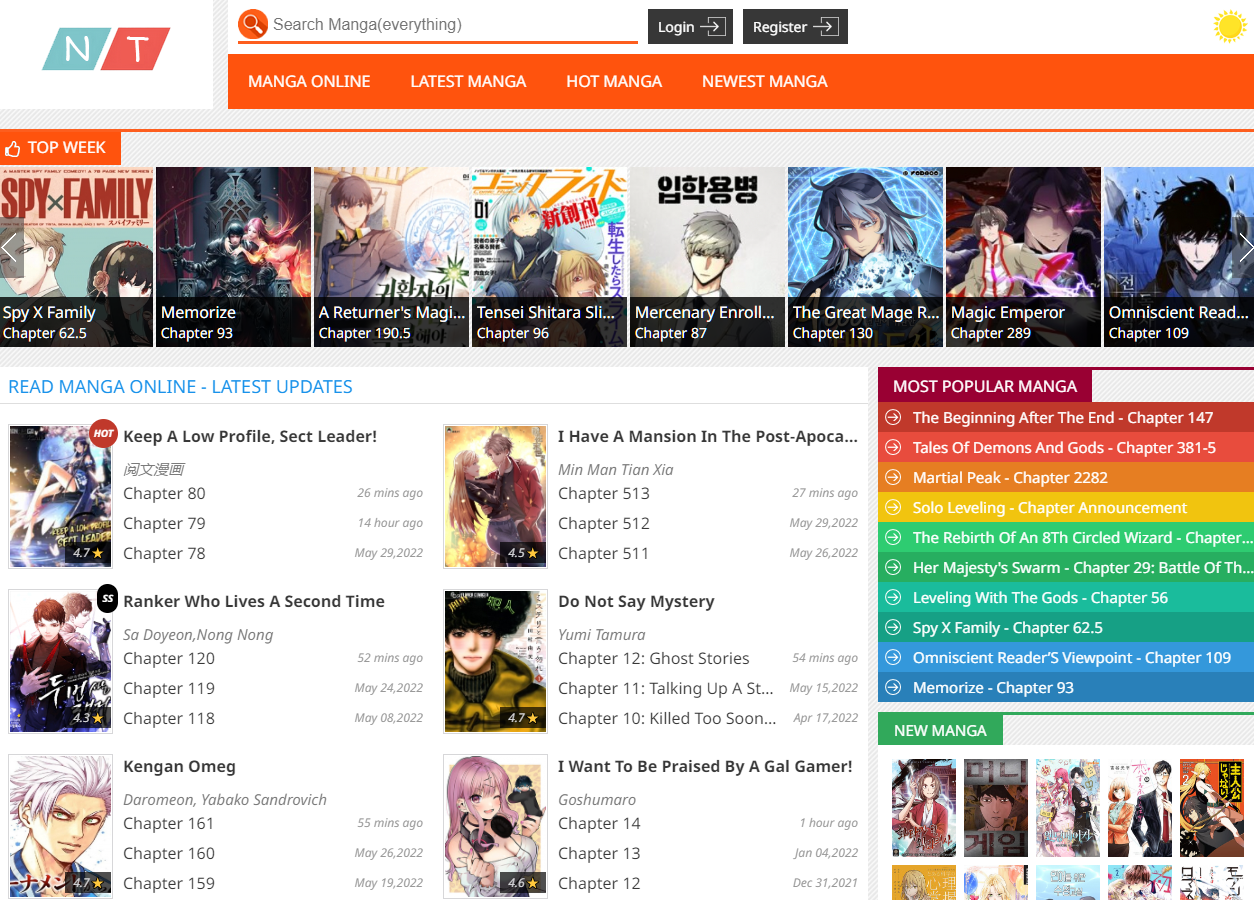🌟 Dịch Vụ Chất Lượng Cao 🌟
✓ 301 Redirect: Chuyển hướng domain an toàn, giữ nguyên giá trị SEO
✓ Guest Post: Đăng bài chất lượng trên các website uy tín
✓ Hỗ trợ tư vấn 24/7
✓ Báo giá cạnh tranh
✓ Thời gian xử lý nhanh chóng
📱 Liên hệ ngay qua Telegram: @subdomaingov
⚡ Hỗ trợ tư vấn miễn phí
I'm The Villain's Constellation But I'm Broke
₫2.332.251
Manganelo Highlights: What’s Trending This Week?
Product description
reveals the delightful ways humor can transform storytelling. From character development to inventive narratives, the essence of April Fool's Day serves as a catalyst for creativity and connection within manga. As we celebrate the playful spirit of this whimsical day, we recognize the power of laughter and its potential to enrich our understanding of character interactions and thematic depth. Whether you're a seasoned manga enthusiast or a newcomer, embracing the humor embedded in these stories offers an exciting path to entertainment and reflection. So immerse yourself in the world of manga, and let the playful antics of April Fool's Day inspire your next reading adventure!
Read Full: manga fox
Exploring the World of Manga Summary April Fool - A Unique Twist on Storytelling
Manga summary April Fool is a delightful exploration that merges the whimsical spirit of April Fools’ Day with the intricate narratives of manga. This unique fusion offers readers not only a laugh but also a deeper understanding of how humor and storytelling can intertwine in unexpected ways. As we delve into this topic, we will uncover the nuances and creativity behind manga summaries especially themed around this playful day.
The Essence of Humor in Manga
Humor is an essential component in many forms of storytelling, including manga. In this section, we will explore how humor plays a crucial role in manga narratives, making them more relatable and enjoyable for audiences.
The Role of Comedy in Manga
Comedy in manga is not only about funny characters or absurd situations. It often serves to highlight deeper themes and character development.
Manga artists employ various comedic techniques, from slapstick humor to witty wordplay. These elements add layers to the storyline, allowing readers to connect emotionally while still enjoying the lightheartedness. For instance, series like "One Piece" and "Naruto" masterfully weave humor into their epic tales, ensuring that the audience remains engaged even during intense moments.
Moreover, comedy can act as a relief mechanism, easing tension built up throughout the story. By incorporating humorous interludes, manga can maintain a balance that prevents the narrative from becoming too heavy or dramatic. This technique is particularly effective in shonen manga, where action and adventure are prevalent.
Satire and Social Commentary
Many manga utilize humor as a form of satire, addressing social issues or cultural norms through a comedic lens.
By exaggerating traits or situations, manga artists can critique societal behaviors, encouraging readers to reflect on real-world contexts. For example, "Gintama" is renowned for its satirical approach, poking fun at everything from politics to pop culture, all while delivering laughs.
This method allows readers to engage with thought-provoking content wrapped in humor, creating a memorable reading experience. As they chuckle, they also consider the underlying message, leading to a richer interpretation of the narrative.
The Charm of Quirky Characters
Unique and quirky characters are a staple in many manga, serving both comedic and narrative purposes.
Characters like the oblivious hero or the overly dramatic sidekick bring a distinctive flavor to the story. Their interactions often lead to humorous scenarios that resonate with readers. The charm of these characters lies in their relatability; we see pieces of ourselves in their flaws and quirks.
Additionally, the development of these characters often involves comedic mishaps, showcasing their growth and transformation throughout the story. Such character arcs contribute to the overall emotional depth of the manga, leaving lasting impressions on readers.
The Significance of April Fool's Day in Manga
April Fool's Day has long been a day of tricks and jokes, and manga creators often embrace this spirit within their works. Let’s dive into how this playful day influences storytelling and character dynamics in manga.
The Tradition of Pranks in Manga
Pranks are a central theme during April Fool's Day, allowing manga artists to creatively express their wit.
In many stories, characters engage in elaborate schemes to outsmart one another, leading to a series of humorous events. This tradition of prank wars not only entertains but also showcases character traits such as cunning, creativity, and teamwork.
For instance, series like "KonoSuba" often feature comical misadventures brought about by pranks, highlighting how these encounters lead to unexpected friendships or rivalries. The stakes may be low, but the outcomes are often profound or hilariously chaotic, ensuring readers are thoroughly entertained.
Playfulness in Story Arcs
Manga that incorporates April Fool’s Day often adopts a playful tone, allowing for experimentation with plotlines.
These playful narratives can break away from traditional storytelling, inviting readers to enjoy absurd twists and turns. This experimentation fosters creativity, giving authors the freedom to explore unconventional ideas without the constraints of serious plots.
Works like "My Hero Academia" have episodes dedicated to light-hearted, prank-filled adventures that contrast with the main story arc's intensity. These moments provide a refreshing diversion, allowing fans to appreciate the characters beyond their heroic personas.
Impact on Character Relationships
The comedic nature of April Fool's Day-themed manga can significantly enhance character relationships.
Through humor and playful antics, characters often reveal their true selves, deepening their connections with one another. As they navigate the chaos of pranks, they learn to rely on each other, fostering camaraderie and trust.
For example, romantic interests may find themselves caught in amusing misunderstandings that lead to endearing moments. These light-hearted circumstances serve as catalysts for character development and relationship building, enriching the overall narrative.
Crafting the Perfect Manga Summary for April Fool
Summarizing manga, especially those with an April Fool's twist, requires a nuanced approach that captures the essence of humor and intricate storytelling. Here, we will dissect the art of crafting engaging summaries that reflect the playful spirit of the day.
Key Elements of an Engaging Summary
An effective manga summary should encompass key elements that draw readers in while conveying the main ideas succinctly.
First, it should capture the unique premise of the manga. Highlighting the setting, character motivations, and conflict is crucial in providing context. A captivating opening line can pique interest, inviting readers to delve deeper into the world created by the author.
Next, humor must be emphasized, illustrating how it is woven into the storyline. Whether through clever dialogue, situational comedy, or absurd scenarios, showcasing these elements draws attention to the manga’s comedic flair.
Lastly, a strong conclusion should hint at the overarching themes or lessons derived from the story, leaving readers curious about the full journey.
Techniques for Summarization
Crafting a summary involves several techniques to ensure clarity and engagement.
Using vivid language is essential. Descriptive phrases can evoke imagery and emotions, painting a picture of the manga's atmosphere. It's important to strike a balance between detail and brevity, ensuring that the summary remains concise without losing its essence.
Another technique is employing humor in the summary itself. If the manga is filled with jokes or puns, reflecting that in the summary can create an immediate connection with potential readers. After all, if readers can appreciate the humor in the summary, they are more likely to seek out the full story.
Tailoring Summaries for Different Audiences
It's vital to adapt manga summaries based on target audiences. Knowing whether your audience consists of seasoned manga readers or newcomers helps shape the summary’s tone and content.
For younger readers or those unfamiliar with the genre, simpler language and direct explanations are beneficial. On the other hand, summaries aimed at experienced manga fans may include references to popular tropes, familiar characters, or seasoned comedic elements, catering to their knowledge and expectations.
Furthermore, integrating elements related to April Fool’s Day can entice audiences seeking a fun, seasonal read. The summary should reflect the playfulness associated with the day, setting the tone for the reader’s expectations.
Celebrated Manga Featuring April Fool's Themes
Several manga stand out for their clever incorporation of April Fool's themes into their narratives. This section will highlight some celebrated titles that embody the spirit of humor synonymous with the holiday.
Gintama: A Masterclass in Satire
"Gintama" is a beloved series known for its exceptional blend of humor, action, and satire. Its creator, Hideaki Sorachi, cleverly integrates numerous cultural references and parodic elements, making it a prime example of how April Fool's-themed storytelling can thrive.
Within the series, April Fool's Day is often depicted through hilarious misunderstandings and trickery. Characters engage in wild pranks that spiral into outrageous situations, showcasing their personalities and relationships in the process.
What makes "Gintama" stand out is its ability to oscillate between laugh-out-loud comedy and poignant moments, demonstrating how humor can coexist with deeper narratives. Readers find themselves not only entertained but also emotionally invested in the characters' journeys.
My Hero Academia: Light-Hearted Adventures
"My Hero Academia" has garnered immense popularity for its engaging superhero storyline. While the series focuses primarily on overcoming challenges, it features episodes dedicated to light-hearted, April Fool's-themed escapades.
These episodes allow characters to showcase their quirky personalities while navigating amusing situations. From elaborate pranks among friends to misunderstood intentions, these light-hearted moments offer a contrast to the series' usual high stakes.
Fans appreciate these segments as a chance to see their favorite heroes in a different light, engaging in fun banter and camaraderie. This balance between intense drama and playful humor exemplifies how April Fool’s themes can enrich a narrative.
KonoSuba: The Ultimate Prankster's Paradise
"KonoSuba" stands out as a parody of the isekai genre, utilizing humor as its cornerstone. With its ridiculous scenarios and quirky characters, it's no surprise that it embraces the spirit of April Fool's Day wholeheartedly.
Throughout the series, we witness countless pranks and absurd situations that result from the characters' incompetence or misguided intentions. The humor is relentless, creating an entertaining dynamic that keeps readers engaged.
What truly sets "KonoSuba" apart is its self-awareness. It constantly plays with tropes and clichés, offering a fresh take on traditional fantasy narratives. These comedic moments encapsulate the essence of April Fool's Day, reminding us that laughter often arises from unexpected encounters.
FAQs
What is the significance of April Fool’s Day in manga?
April Fool's Day adds a layer of humor and playfulness to manga narratives. It encourages creative storytelling, allowing authors to experiment with absurd plotlines and hijinks that entertain readers.
How does humor enhance character development in manga?
Humor provides insight into character traits, exposing vulnerabilities and strengths in a light-hearted manner. Comedic scenarios often foster camaraderie, allowing for deeper connections between characters and engaging readers on emotional levels.
Can I find manga specifically themed around April Fool's Day?
Yes! Many manga feature special chapters or episodes centered around April Fool’s Day. These often include pranks, misunderstandings, and comical adventures that embody the spirit of the holiday.
How do I craft a compelling manga summary?
To create an engaging summary, focus on key elements like the premise, humor, and overarching themes. Employ vivid language, keep it concise, and tailor it to your intended audience, ensuring it reflects the unique style of the manga.
Are there any notable manga that showcase April Fool’s humor effectively?
Yes, titles like "Gintama," "My Hero Academia," and "KonoSuba" successfully incorporate humor and April Fool's themes. Each utilizes comedic elements in unique ways, providing readers with unforgettable narratives filled with joy.
Conclusion
Exploring the intersection of manga summary April Fool







